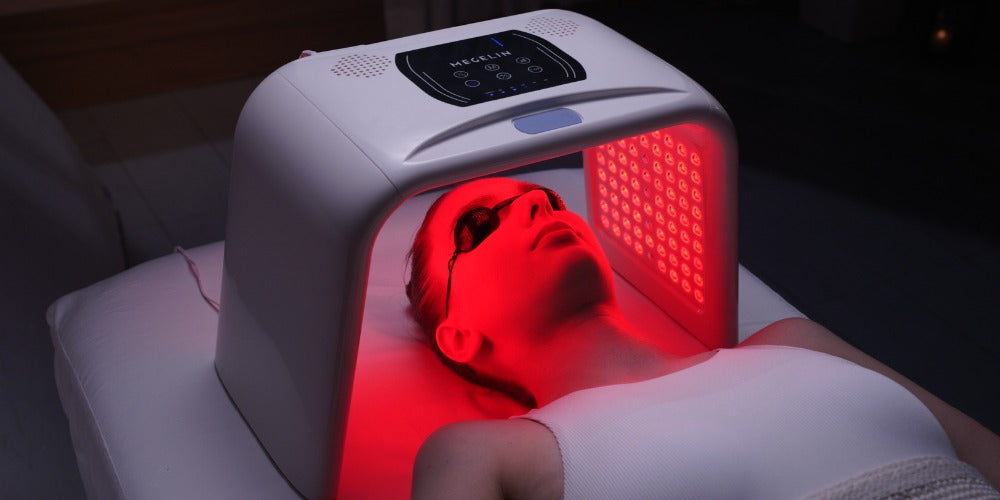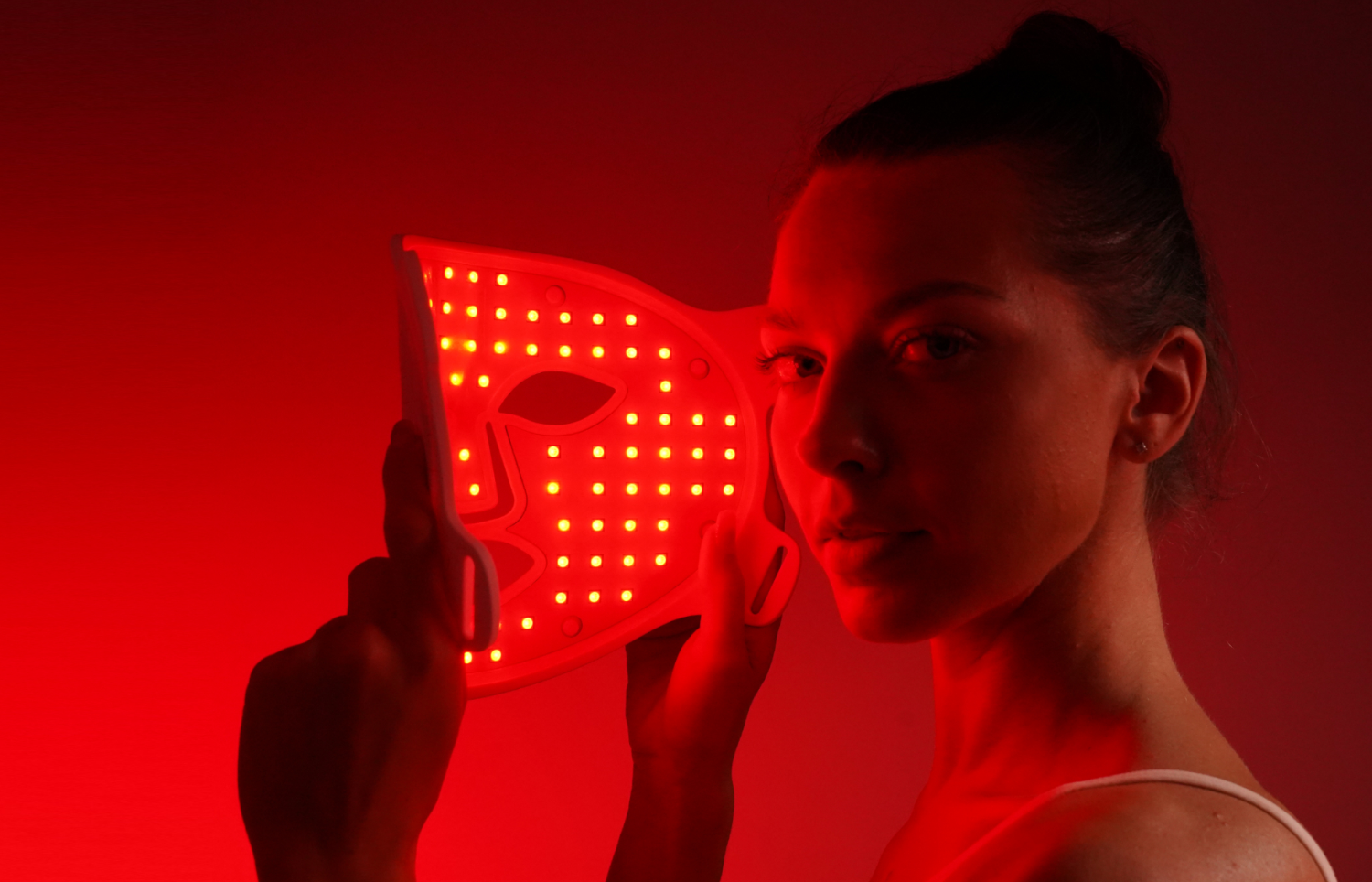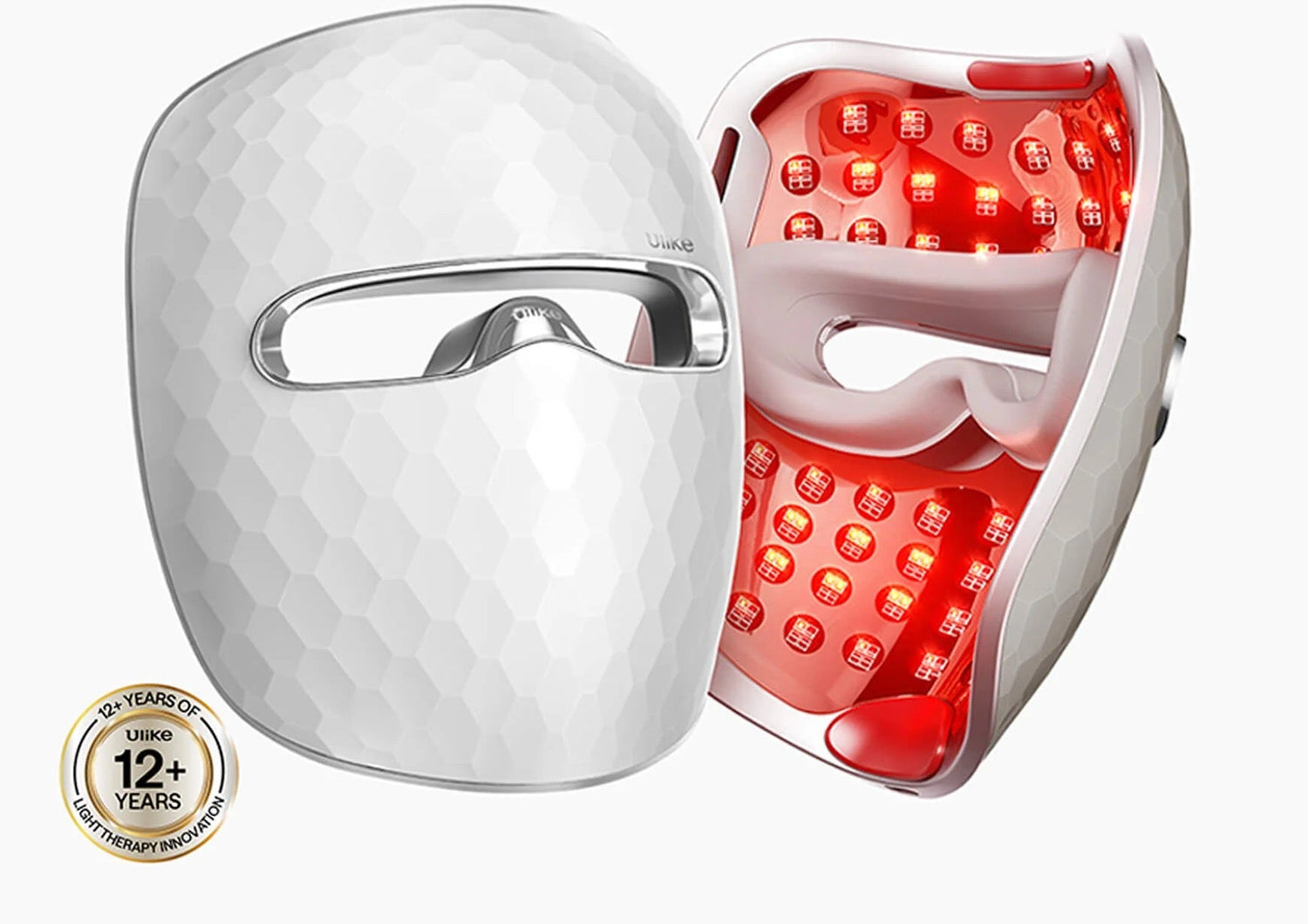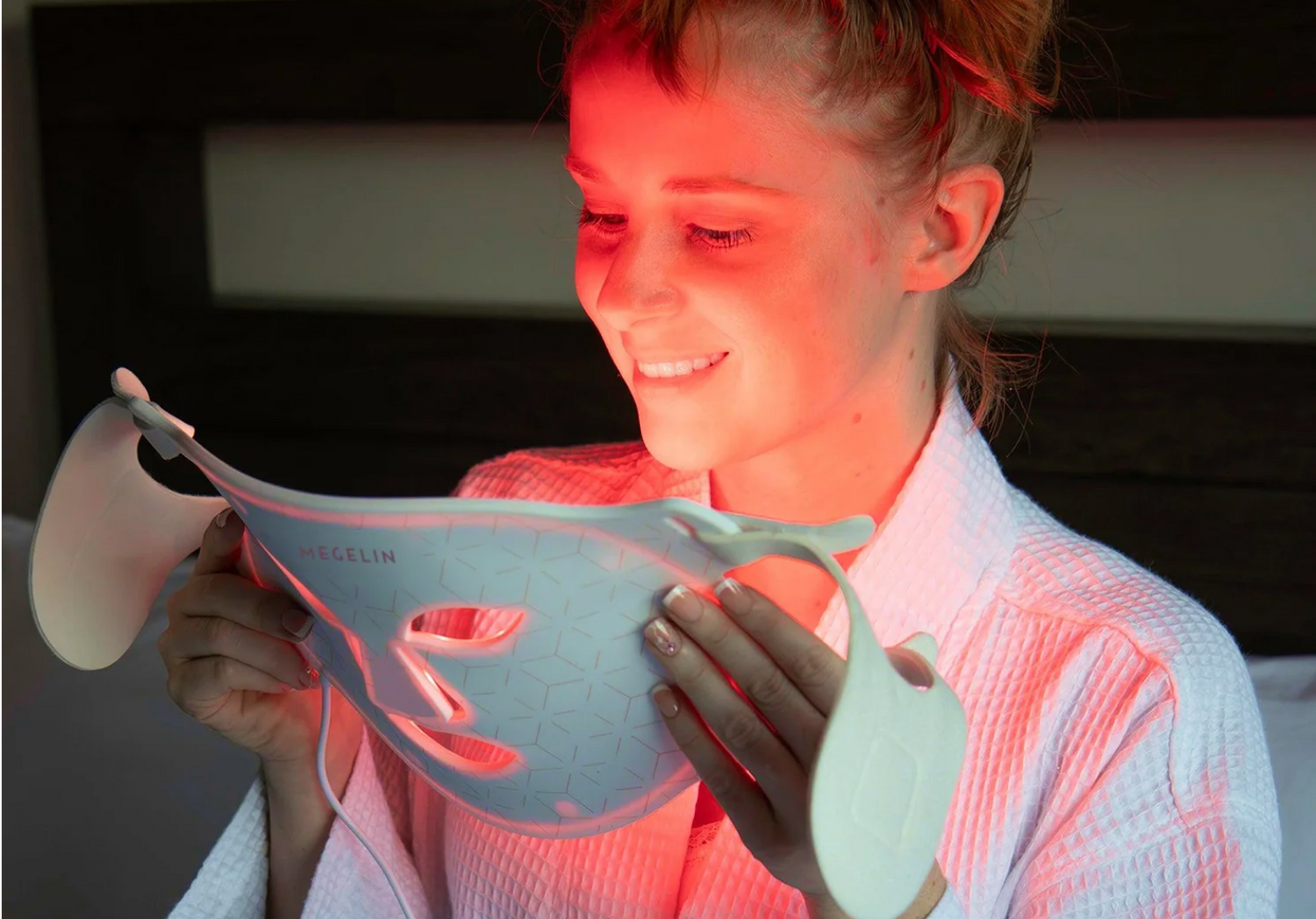
How Near-Infrared Light Therapy Can Improve Your Health
megelinbeautyHave you ever wondered about the potential health benefits of infrared light? This innovative therapy is gaining attention in the medical community for its ability to improve various aspects of health and well-being. Infrared light therapy uses specific wavelengths of light to penetrate deep into the body's tissues, offering a range of potential benefits from pain relief to skin rejuvenation.
In this article, we'll explore what infrared light therapy is and how it works. We'll delve into its numerous health benefits, including its potential to boost cellular energy, enhance blood flow, and reduce inflammation. We'll also discuss practical ways to use infrared light therapy and what to keep in mind when considering this treatment option. By the end, you'll have a better understanding of how this therapy might fit into your health and wellness routine.
What is Infrared Light Therapy?
Definition of infrared light
Infrared light is a type of energy that forms part of the electromagnetic spectrum. It is invisible to the human eye but can be felt as heat. This form of radiation has wavelengths longer than visible light, ranging from 760 nanometers to 1 millimeter [1]. Interestingly, every object with a temperature emits some form of infrared heat, including seemingly cold objects like ice cubes .
Infrared light is naturally present in our environment. The sun is a significant source of infrared radiation, and humans have been benefiting from its healing properties for centuries. Ancient therapies have utilized sunlight for wound healing and pain relief [1]. Our bodies, composed of approximately 70% water, can absorb a substantial amount of infrared energy, which has the potential to influence various biological processes [1].
How infrared light therapy works
Infrared light therapy is a non-invasive procedure that uses light-emitting diodes (LEDs) to deliver specific wavelengths of light to the body . The therapy involves illuminating concentrated wavelengths of light between 810nm and 850nm on bare skin . When these light photons reach light-sensitive molecules in our cells, they stimulate the mitochondria, often referred to as the "cell energy generators" .
This stimulation leads to increased production of adenosine triphosphate (ATP), which is crucial for cellular energy production . As a result, cells that are illuminated by the light receive an energy boost, enabling them to function more efficiently and carry out repairs and remodeling more effectively .
The therapy also triggers the release of nitric oxide, a gas vital to arterial health. Nitric oxide helps relax arteries, combats free radicals to reduce oxidative stress, prevents platelet clumping in blood vessels, and regulates blood pressure . This enhanced blood circulation allows for better delivery of oxygen and nutrients to damaged tissues, promoting healing and reducing pain and inflammation .
Types of infrared light used in therapy
Infrared light therapy utilizes different bands of the infrared spectrum, each with its unique characteristics and benefits:
- Near-Infrared (NIR): With wavelengths between 700 and 1,100 nanometers, NIR can penetrate the skin's outer epidermis layer. It is effective in removing toxins, dead skin cells, oils, dirt, and bacteria from the skin. NIR also stimulates collagen and elastin production, promoting skin rejuvenation .
- Mid-Infrared (MIR): This longer wavelength penetrates deeper into the body's soft tissues where inflammation often occurs. MIR helps expand blood vessels and increase circulation, allowing more oxygen to reach injured areas .
- Far-Infrared (FIR): The longest wavelength in the infrared spectrum, FIR reaches deep into the body where toxins are stored. It stimulates sweat glands through direct heat, resulting in a deep, detoxifying sweat . FIR can penetrate up to 1.5 inches (almost 4 cm) beneath the skin [1].
The most effective wavelengths for therapeutic purposes are typically in the mid-600nm to high-800nm range, as these have the greatest impact on cellular respiration . Regardless of the type, infrared light therapy is generally considered safe and doesn't expose the skin to damaging UV rays .
Health Benefits of Infrared Light Therapy
Infrared light therapy has gained significant attention in the medical community for its potential to improve various aspects of health and well-being. This non-invasive treatment utilizes specific wavelengths of light to penetrate deep into the body's tissues, offering a range of therapeutic benefits.
Pain and Inflammation Reduction
One of the most notable benefits of infrared light therapy is its ability to alleviate pain and reduce inflammation. This therapy has shown promising results in treating various conditions characterized by chronic inflammation. A randomized, triple-blind, placebo-controlled trial published in Lasers in Medical Science demonstrated that patients recovering from hip arthroplasty surgery experienced a greater reduction in post-operative pain and swelling when treated with natural light therapy [1].
Infrared light therapy works by enhancing blood flow to damaged tissues, which helps to bring oxygen and nutrients to the affected areas. This increased circulation promotes healing and reduces pain and inflammation . Additionally, infrared light therapy has been found to increase the body's antioxidant defenses, further contributing to its anti-inflammatory effects .
Improved Skin Health
Infrared light therapy has shown significant potential in improving skin health and appearance. A randomized, controlled study of 136 patients demonstrated that red light therapy was as effective as light therapy with a broader range of wavelengths in improving skin complexion . The treatment resulted in increased collagen density, as measured by ultrasound, leading to improved skin elasticity and reduced signs of aging .
Near-infrared (NIR) light, with wavelengths between 700 and 1,100 nanometers, can penetrate the skin's outer epidermis layer. This penetration helps to remove toxins, dead skin cells, oils, dirt, and bacteria from the skin. NIR also stimulates collagen and elastin production, promoting skin rejuvenation .
Enhanced Wound Healing
Infrared light therapy has demonstrated remarkable potential in accelerating wound healing processes. Studies have shown that far-infrared (FIR) radiation therapy can enhance wound healing in rat models . In clinical observations, wounds exposed to FIR experienced decreased healing times .
A study using an in vitro wound model with 3T3 fibroblasts found that low-power laser light at 661 nm activated both migration and proliferation of cells, providing evidence that it could accelerate wound healing in vivo [4]. The therapy also influenced reactive oxygen species (ROS) production and cellular orientation, which play important roles in the wound healing process [4].
Increased Muscle Recovery
Infrared light therapy has shown significant benefits for muscle recovery and performance. Recent clinical studies have demonstrated that red and near-infrared light therapy can repair muscle, enhance athletic performance, and aid in the recovery process following a workout or injury [5].
This therapy works by stimulating mitochondria, the powerhouses of cells, to produce more energy in the form of ATP (adenosine triphosphate). Since muscle tissue has a high concentration of mitochondria, it is particularly responsive to high doses of red and infrared light therapy [5]. This increased cellular energy production can lead to faster muscle recovery, reduced fatigue, and improved athletic performance.
Better Cardiovascular Health
Infrared light therapy has shown promising results in improving cardiovascular health. Far-infrared (FIR) light may provide benefits for those with high blood pressure and impaired blood flow through major arteries, a condition known as endothelial dysfunction . This beneficial effect is possibly due to increased nitric oxide production, a known vasodilator .
A randomized controlled study of 21 patients evaluated the use of Waon therapy, a form of far-infrared therapy, for peripheral arterial disease. After five sessions per week for six weeks, patients experienced significant improvements in leg pain, walking distance, and ankle pulses .
Infrared light therapy enhances the production of nitric oxide, a vital signaling molecule important for blood vessel health. Nitric oxide helps relax arteries, prevents blood clotting, combats free radicals, and regulates blood pressure. These effects contribute to improved blood circulation, which provides more oxygen and nutrients to tissues throughout the body .
How to Use Infrared Light Therapy
At-home devices vs professional treatments
Infrared light therapy can be administered through both at-home devices and professional treatments. At-home devices offer convenience and cost-effectiveness, allowing users to incorporate the therapy into their daily routines. These devices come in various forms, such as masks, wands, panels, and beds [1]. However, it's important to note that home devices are typically less powerful than those used in clinical settings and may require longer treatment times to achieve similar results .
Professional treatments, on the other hand, often utilize more powerful devices that can deliver higher irradiance levels, potentially leading to more effective and faster results . Clinics may offer full-body red light therapy beds or larger panels that can treat extensive areas simultaneously [1].
When choosing between at-home devices and professional treatments, consider factors such as the condition being treated, the desired treatment area, and the frequency of use. For targeted treatments of small areas, portable at-home devices may suffice. However, for more comprehensive treatments or specific medical conditions, professional treatments might be more appropriate [1].
Recommended treatment protocols
The effectiveness of infrared light therapy depends on several factors, including the device's specifications, treatment duration, and frequency. Here are some general guidelines for using infrared light therapy:
- Treatment duration: Sessions typically range from 1 to 20 minutes per treated area. It's recommended to start conservatively with 3 to 5 applications a week, for approximately 1 to 10 minutes per treated area [1].
- Distance from the device: For general skin health and anti-aging purposes, position the device 30-45 cm away from your body. For deeper tissue treatments, such as chronic pain or muscle injuries, place the device 15 to 30 cm away [1].
- Wavelength selection: For skin treatments, a wavelength of 660 nm is often used. For deeper tissue treatments or sports recovery, 850 nm is more common .
- Treatment frequency: Gradually increase the frequency to daily use as your body adjusts to the therapy [1].
- Energy density: For skin conditions, aim for approximately 5 to 15 J/cm2 per session of a treated area [1].
It's crucial to follow the specific instructions provided with your device, as treatment protocols may vary depending on the device's specifications and the condition being treated.
Safety considerations
While infrared light therapy is generally considered safe, there are several important safety considerations to keep in mind:
- Eye protection: Always use proper eye protection when using infrared light therapy devices, especially for treatments near the face .
- Skin sensitivity: If you have sensitive skin, start with shorter sessions and gradually increase the duration as your skin adjusts [1].
- Medical conditions: Individuals with certain medical conditions, such as those taking photosensitive medications or those with glaucoma or lupus, should consult with a healthcare professional before using infrared light therapy .
- FDA clearance: When choosing an at-home device, look for those that are FDA-cleared to ensure safety standards are met .
- Avoid overuse: Adhere to the recommended treatment protocols and avoid excessive use, as this could potentially lead to adverse effects .
- Pregnancy and heart conditions: Pregnant women and individuals with heart diseases should avoid infrared therapy unless specifically advised by a healthcare professional [4].
- Complementary treatment: Infrared therapy should not replace prescribed medications or treatments for chronic conditions without consulting a healthcare provider [4].
By following these guidelines and consulting with a healthcare professional when necessary, users can safely incorporate infrared light therapy into their wellness routines and potentially experience its various health benefits.
Conclusion
Infrared light therapy has emerged as a promising approach to enhance various aspects of health and well-being. Its ability to boost cellular energy, improve blood flow, and reduce inflammation has a significant impact on pain relief, skin rejuvenation, wound healing, muscle recovery, and cardiovascular health. This non-invasive treatment offers a versatile solution to address a wide range of health concerns, making it an attractive option for those looking to improve their overall wellness.
As with any health intervention, it's crucial to use infrared light therapy responsibly and under proper guidance. Whether opting for at-home devices or professional treatments, adhering to recommended protocols and safety guidelines is key to maximize benefits and minimize risks. As research in this field continues to grow, infrared light therapy holds the potential to revolutionize how we approach health and healing, offering a natural and effective complement to traditional medical treatments.
FAQs
1. How does infrared light therapy contribute to healing in the body?
Infrared light therapy aids in reducing pain and inflammation by penetrating the skin and reaching muscles and other tissues directly. This penetration improves blood circulation, which enhances the delivery of oxygen to healing areas, potentially accelerating the recovery process.
2. Are there any health benefits associated with infrared therapy?
Research has indicated potential health benefits of infrared saunas, particularly in managing chronic conditions such as high blood pressure, heart failure, dementia, Alzheimer's disease, headaches, type 2 diabetes, and arthritis. These studies suggest that infrared therapy may offer therapeutic effects in these conditions.
3. What are the specific advantages of using near infrared light therapy?
Near infrared light therapy is associated with several health benefits, including anti-aging effects, increased energy, improved vision, stronger bones and muscles, enhanced skin elasticity and appearance, improved cognitive function, and reduced inflammation, pain, and stiffness.
4. What are the health risks associated with infrared light exposure?
Prolonged exposure to infrared light can lead to serious eye damage, including a gradual and irreversible clouding of the lens, known as opacity. Other risks include scotoma, a type of vision loss caused by retina damage, and general eye discomforts such as redness, swelling, or hemorrhaging, even from low-level infrared absorption.
References
[1] - https://www.news-medical.net/health/How-Does-Infrared-Therapy-Work.aspx
[2] - https://www.news-medical.net/health/Infrared-Therapy-Health-Benefits-and-Risks.aspx
[3] - https://www.rupahealth.com/post/11-health-benefits-of-infrared-light-therapy
[4] - https://www.healthline.com/health/red-light-therapy
[5] - https://www.physio-pedia.com/Infrared_Therapy










